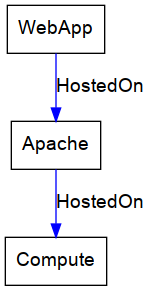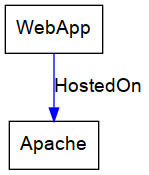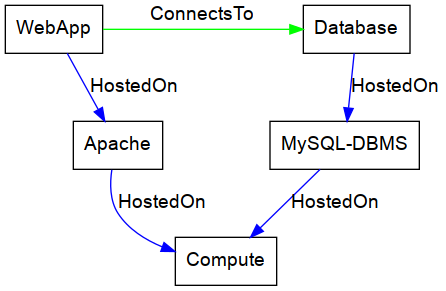Definitions
To simplify the documentation of the Kubernetes plugin, the following terminologies are used.
Complete Topology
For simplicity we assume that the topology is described completely with no implicit node template definitions.
The most important part of this is, that every host requirement is fulfilled.
I.e., every node (excluding storage nodes) has a direct or indirect (transitive) HostedOn relationship to a compute node.
Missing artifacts (for example when using non normative types) does not represent a issue by default.
| Complete topology | Incomplete topology |
|---|---|
 |
 |
Top-level node
A top-level node is a TOSCA node that does not have any nodes hosted on it (i.e. the node does not have any HostedOn child nodes).
It therefore represents the highest level node in the topology, hence the name top-level node.
Node stack
A node stack represents one application (top-level node) within the topology.
The top-level node (application node) and all its HostedOn parents down to the compute node is called a node stack.
It is possible to have multiple node stacks with the same parent nodes (including the compute node).
The following example shows the grouping of node stacks using a single compute node LAMP style application.

The node stacks in this topology are:
| Node Stack 1 (WebApp) | Node Stack 2 (Database) |
|---|---|
| WebApp | Database |
| Apache | MySQL-DBMS |
| Compute | Compute |